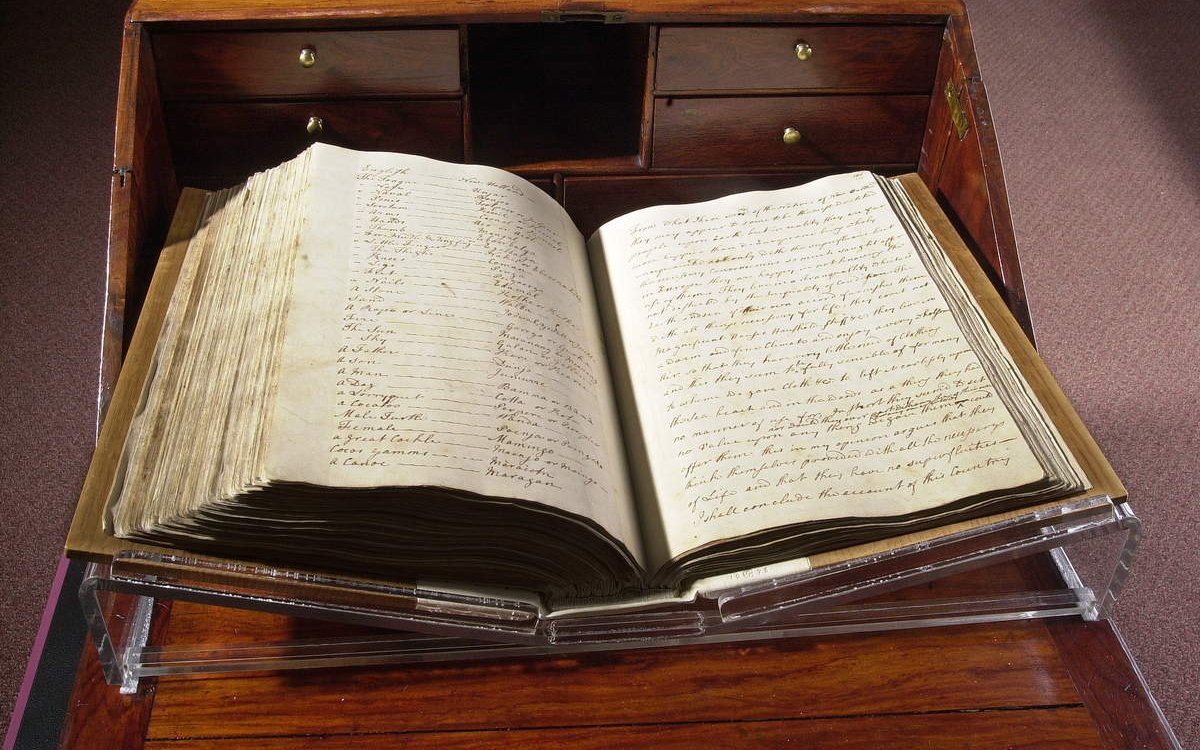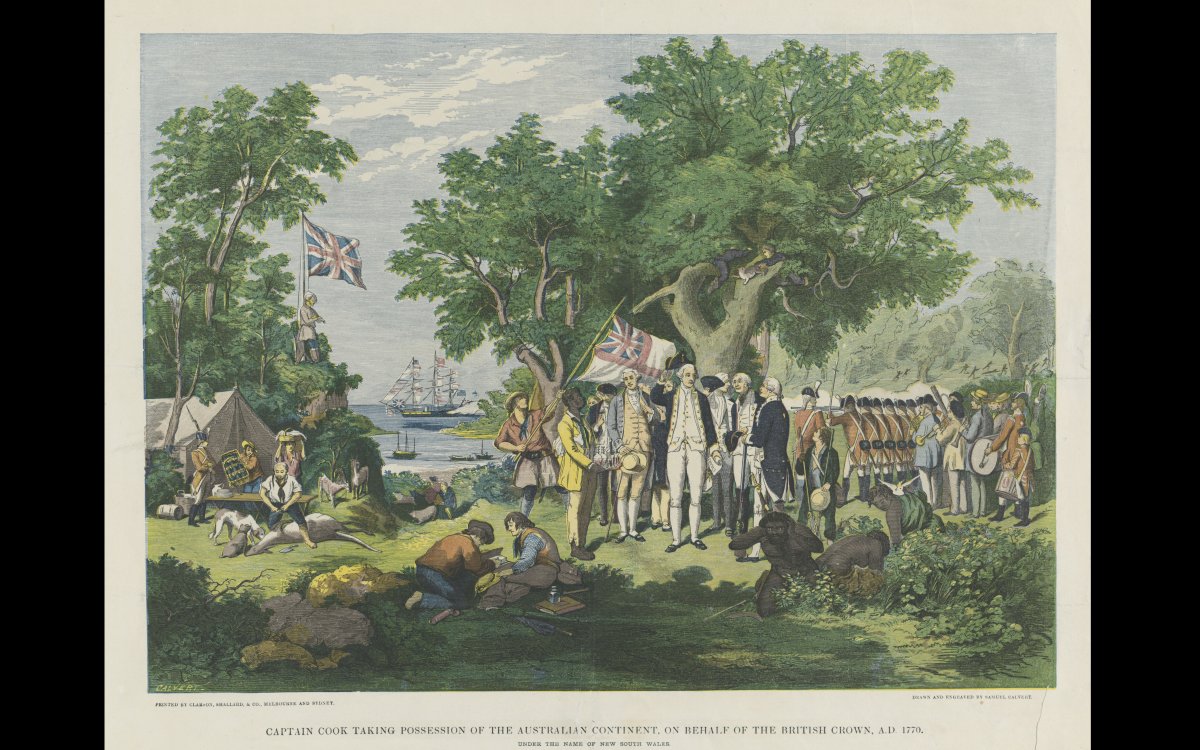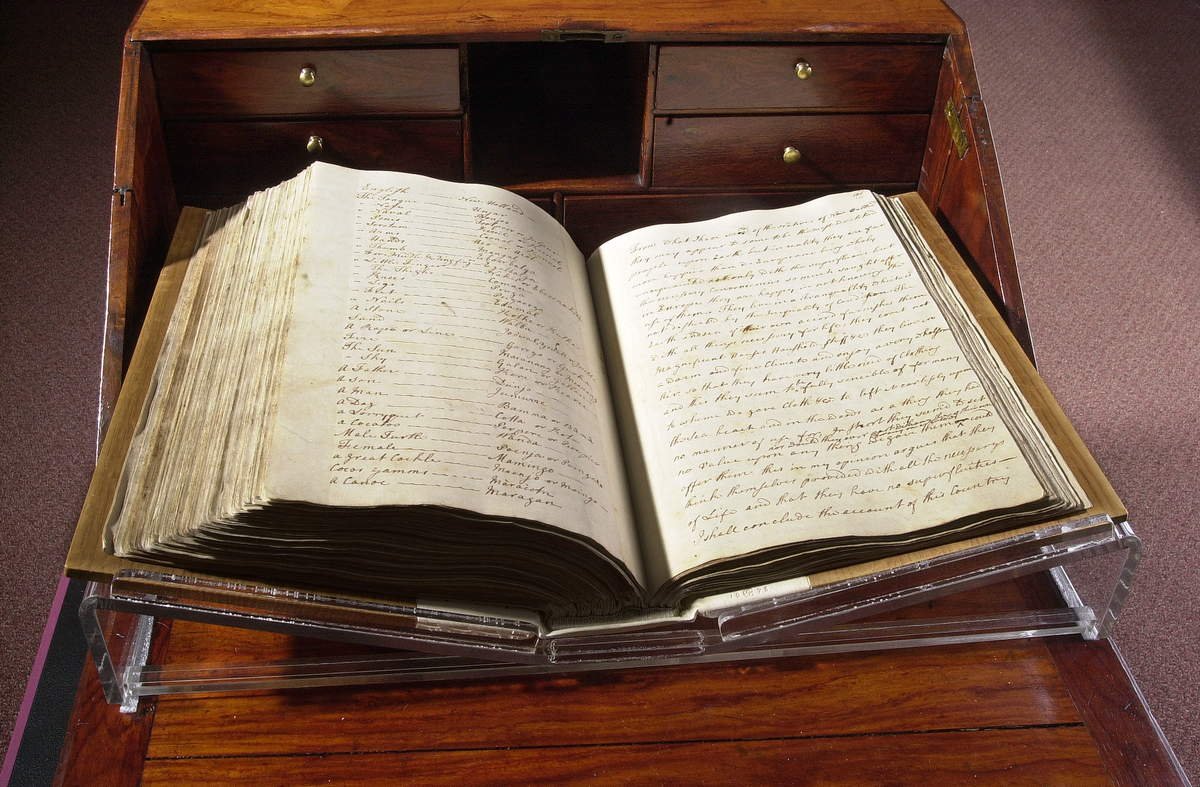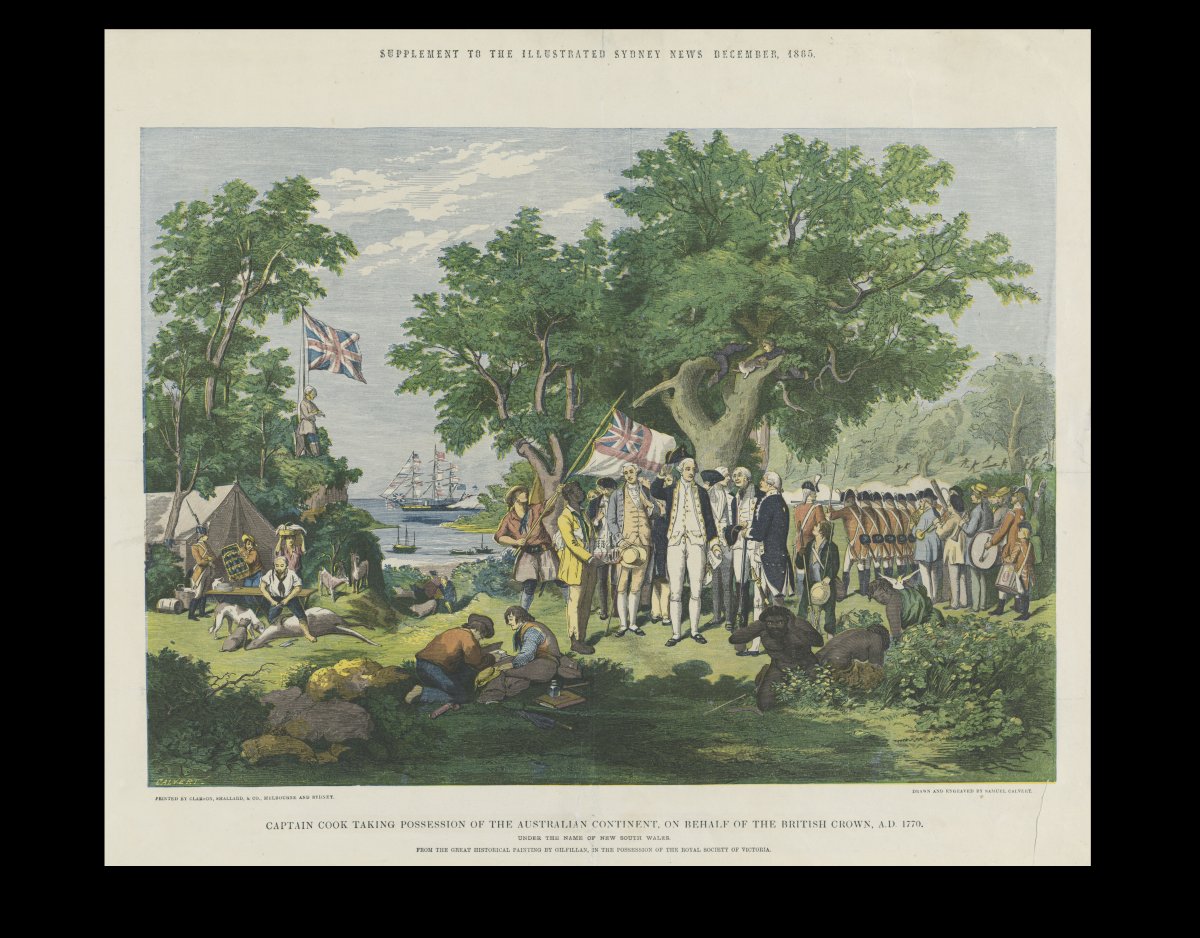Manuscript number one in the Manuscripts Collection of the National Library of Australia is the original copy of Lieutenant James Cook’s (1728–1779) handwritten journal documenting the voyage of HMS Endeavour from 1768 to 1771.
Cook’s 753-page journal is filled with detail and information. During his three-year voyage, Cook wrote regularly about shipboard life, the weather and conditions in which he sailed, and the places and people he encountered.

Cook, James, 1728-1779 & Hutchinson, John & Wallis, Samuel, 1728-1795 & Bolckow, Henry William Ferdinand, 1806-1878. (1768). Journal of H.M.S. Endeavour, 1768-1771 [manuscript]. http://nla.gov.au/nla.obj-228958440
1. With your students, explore some pages from the Endeavour journal and watch the video National Treasures—Endeavour Journal
Presenter and cartoonist Warren Brown describes the journal as a ‘treasure’. Discuss the following questions with your students:
- Do you think the Endeavour journal is a treasure? Why/why not?
- Can you think of some other Australian national treasures?
- What do you think makes something a national treasure?
2. Read the following extract from the Endeavour journal to your students. In the extract, James Cook describes the Aboriginal people he saw at Botany Bay in May 1770:
those I saw were about as tall as Europeans of a very dark colour but not black nor had they wooly or frizzled hair, but black and lank much like ours no sort of clothing or ornaments were ever seen by any of us upon any one of them or in or about their huts from which I conclude they never wear any.
With your students, look at the engraving Captain Cook Taking Possession of the Australian Continent on Behalf of the British Crown AD 1770. The engraving, published in The Illustrated Sydney News in 1865, was created from a painting by John Alexander Gilfillan (1793‒1864).

Calvert, Samuel, 1828-1913 & Gilfillan, J. A. (John Alexander), 1793-1864. (1865). Captain Cook taking possession of the Australian continent on behalf of the British crown, AD 1770, under the name of New South Wales [picture] / drawn and engraved by Samuel Calvert from the great historical painting by Gilfillan in the possession of the Royal Society of Victoria. http://nla.gov.au/nla.obj-135699884
This is an engraving by Samuel Calvert of an oil painting which was exhibited at the 1866─1867 Melbourne Intercolonial Exhibition. The original painting, once in the collection of the Royal Society of Victoria, is now lost. The Union Flag depicted in the illustration is an anachronism. It is a flag used after the union with Ireland in 1801, not the flag of 1770. Also, the ceremony being recorded actually took place on Possession Island; the artist seems to have erroneously depicted the scene at Botany Bay.
This is an engraving by Samuel Calvert of an oil painting which was exhibited at the 1866─1867 Melbourne Intercolonial Exhibition. The original painting, once in the collection of the Royal Society of Victoria, is now lost. The Union Flag depicted in the illustration is an anachronism. It is a flag used after the union with Ireland in 1801, not the flag of 1770. Also, the ceremony being recorded actually took place on Possession Island; the artist seems to have erroneously depicted the scene at Botany Bay.
Having considered the Endeavour journal and Calvert’s engraving—both of which are European perspectives of James Cook’s arrival—invite your students to think about the arrival of the Endeavour from the perspective of the Aboriginal people living at Botany Bay. Students should role play (as a class or in groups) a scenario where a group of Aboriginal men recount the experience of seeing some British naval officers from the Endeavour rowing ashore in Botany Bay. In the role play, the Aboriginal men should describe to their family what they saw and how they feel about it. Other students should take on the role of family members—encourage these students to think of questions they would ask the Aboriginal men.
Other Treasures sources that relate to the concepts explored in this source include: Early explorers, First Fleet, First peoples.

